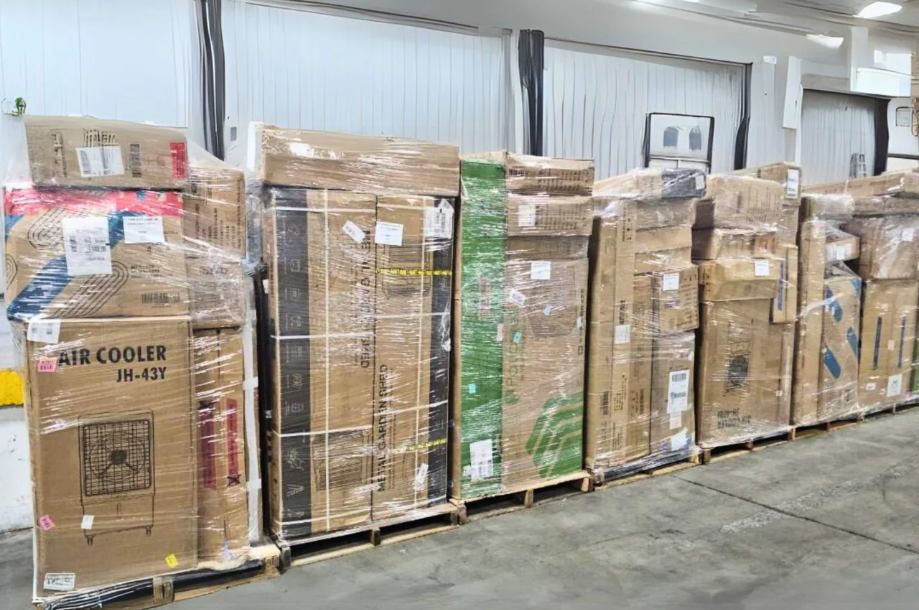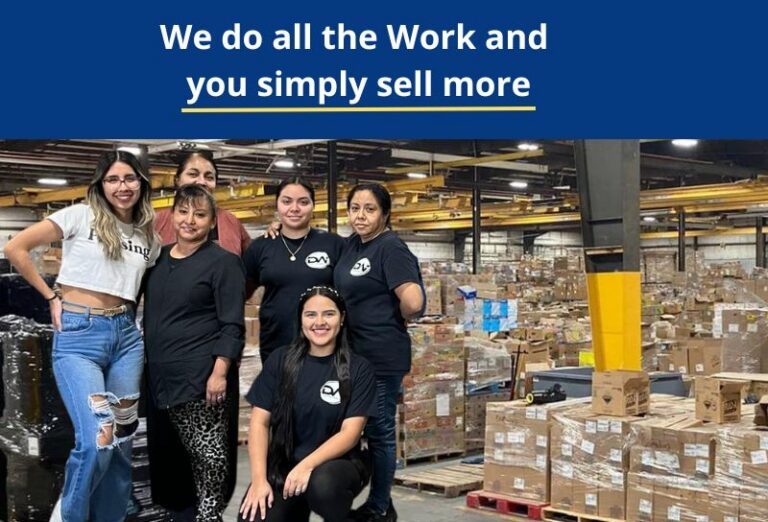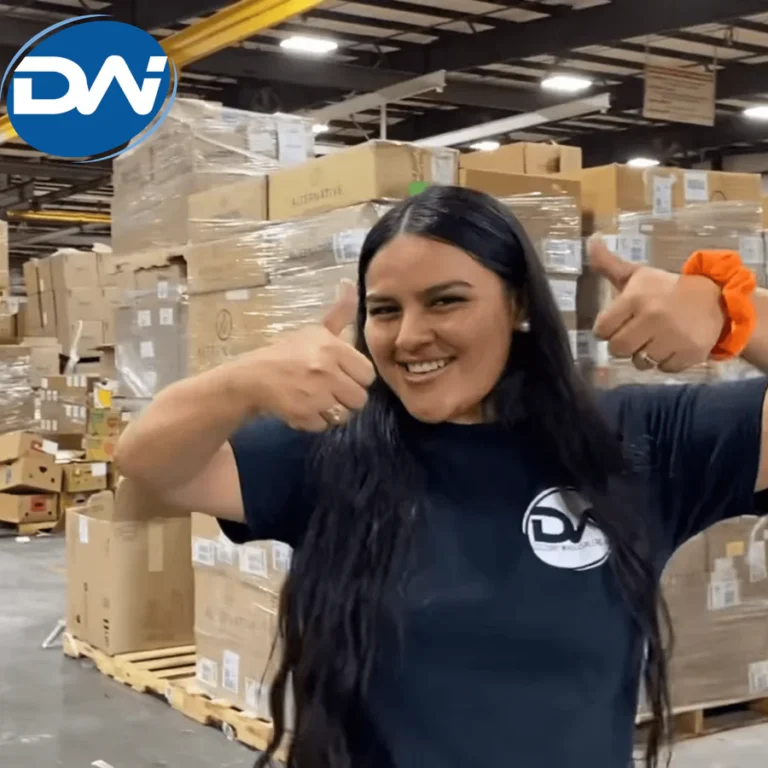Liquidation Pallets for Sale: Unlock Huge Savings on Inventory
Liquidation pallets refer to bulk lots of returned or excess merchandise sold at discounted prices. They typically contain a mix of products from major retailers, offering opportunities for resellers and entrepreneurs to acquire inventory at a fraction of retail costs. These pallets can include items like electronics, clothing, and home goods. Understanding the types of products available and their conditions is essential for anyone interested in purchasing liquidation pallets effectively.
Understanding Liquidation Pallets
Liquidation pallets are an intriguing aspect of the wholesale market. They provide resellers and entrepreneurs access to a variety of products at significantly reduced prices. This section delves into the nature of these pallets and the types of merchandise they typically contain.
What Are Liquidation Pallets?
Liquidation pallets consist of bulk inventories that retailers and manufacturers need to unload. These items often include excess stock, customer returns, and goods that are no longer in the sales cycle. The goal is to sell these products at a lower cost than traditional retail prices, allowing buyers to capitalize on the opportunity of discounted merchandise.
Types of Products Available
The variety found in liquidation pallets is one of their most appealing aspects. Here are some common categories of items typically included:
1 – Electronics
Electronic devices such as smartphones, laptops, and accessories are often found in liquidation pallets. These items can offer great resale value, especially if they are popular brands.
2 – Clothing and Accessories
Pallets may include seasonal apparel, fashion accessories, and footwear from well-known retailers. This category is particularly attractive for reselling in online marketplaces.
3 – Home and Kitchen Items
Home goods, including kitchen appliances, cookware, and decor, are frequently featured. These products cater to a broad market, making them ideal for potential resale.
4 – Toys and Pet Supplies
Products aimed at children and pets often make their way into liquidation pallets . This includes toys, games, and pet care items, appealing to families and pet owners alike.
5 – Bar Refrigerators and Water Coolers
Specialized appliances such as bar refrigerators and water coolers can sometimes be found. These items are not only useful but can also attract niche markets.
Conditions of Merchandise
Understanding the condition of the products within liquidation pallets is essential for buyers. Different grades of merchandise can affect resale potential and overall satisfaction:
1 – New and Brand New
Products classified as new are typically unopened and maintained in their original packaging. These items are the most desirable and usually command higher resale prices.
2 – Damaged and Untested Products
Some pallets may contain items that are damaged or untested. While they can be purchased at a lower price, they also come with inherent risks regarding functionality and appeal.
3 – Customer Returns
Returns may range from slightly used to completely unopened. Each item in this category should be examined closely, as their conditions can vary widely.
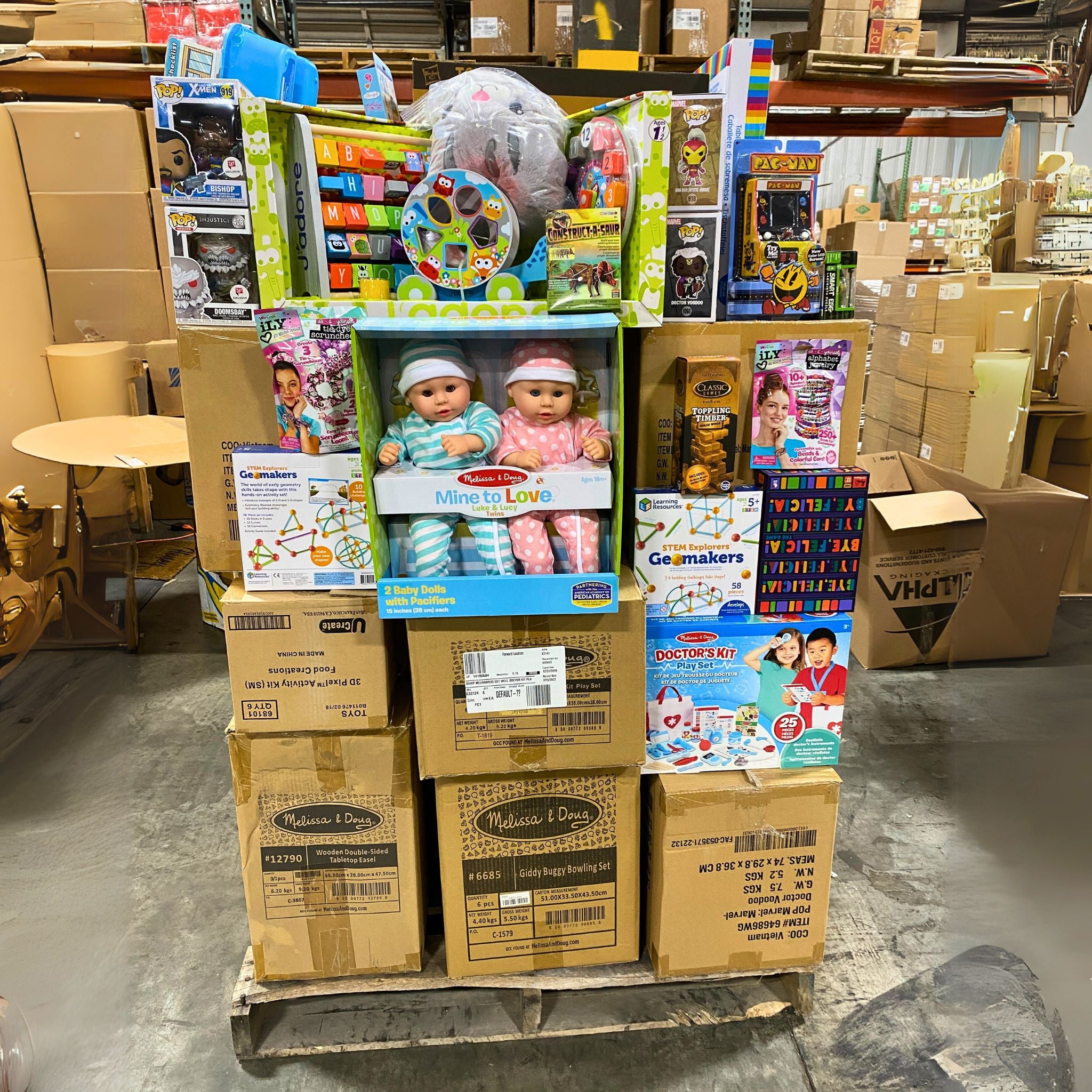
The Buying Process
Understanding the buying process is crucial for effectively purchasing liquidation pallets. This section outlines the key steps involved, from selecting a supplier to payment and shipping options.
Researching and Selecting a Supplier
Finding a reliable supplier is the first step in the buying process. Numerous companies offer liquidation pallets, each with unique inventory and pricing. Research is essential to ensure the supplier has a solid reputation and positive customer reviews. Potential buyers should look for:
- Online reviews and testimonials from previous customers.
- Detailed listings that provide a clear description of the products available.
- Transparency regarding the condition of merchandise and return policies.
How to Bid in Auctions
Many suppliers operate through auction platforms where buyers can bid on pallets. Familiarity with the auction process can lead to successful purchases at low prices.
Auction Process Explained
During an auction, buyers place bids on pallets, competing against others. The auction typically has a predefined duration, and the highest bidder wins when time expires. It’s important to monitor the auction closely and stay informed about the current highest bid.
Understanding Bids and Bid Terms
Each auction comes with specific terms, including starting bids and bidding increments. Knowing when to place a bid strategically can make a significant difference in the final purchase price.
Payment Information
After winning an auction or selecting a pallet to purchase, the next step involves payment. Various payment methods are accepted, enhancing convenience.
Accepted Payment Methods
Commonly accepted methods include:
- Credit cards
- Debit cards
- Bank transfers
- Payment services like PayPal
Payment Terms and Conditions
Each supplier may have different terms regarding payment timelines and procedures. It’s essential to read and understand these terms to avoid unexpected issues.
Shipping Information
Once payment is completed, arrangements for shipping must be addressed. Shipping logistics can vary significantly between suppliers, impacting overall costs and delivery times.
Shipping Options and Costs
Many suppliers offer a variety of shipping options. Costs often depend on the following factors:
- The size and weight of the pallet.
- The shipping destination.
- Preferred shipping method (standard vs. expedited).
Understanding these factors will help buyers prepare for the total investment required.
Shipping from Brantford and Fort
Some suppliers ship directly from specific locations, such as Brantford and Fort, which can influence shipping costs and delivery times. Being aware of the shipping origin can aid in estimating how long the order will take to arrive.
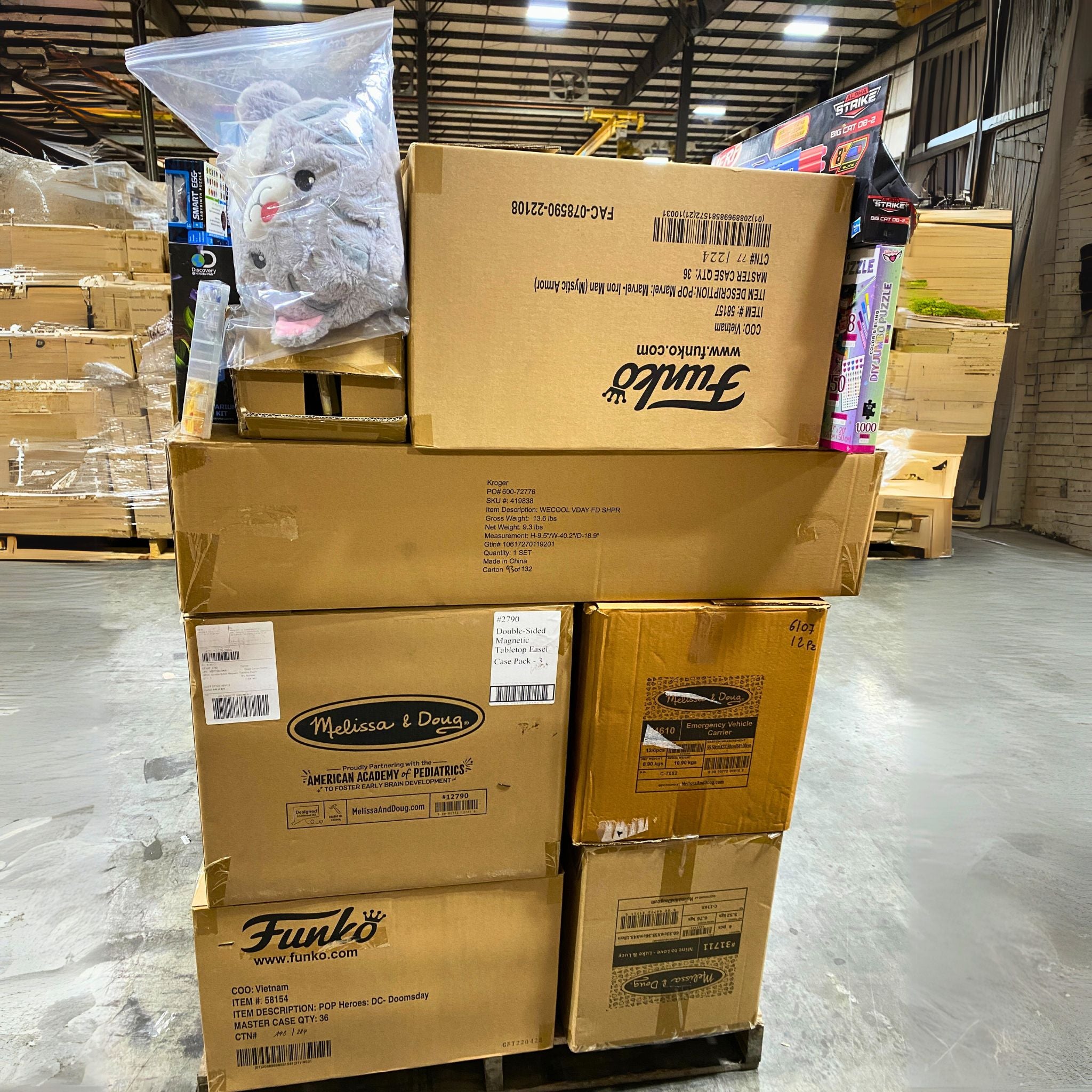
Liquidation Opportunities
Liquidation opportunities abound in the marketplace, offering unique avenues for acquiring inventory. Exploring various sources can unlock significant potential for businesses aiming to enhance their offerings and profitability.
Working with Direct Liquidation
Direct Liquidation stands out as a prominent platform for purchasing liquidation pallets. They specialize in providing access to large amounts of varied inventory from major retailers. Buyers can browse their extensive online catalog, which features a wide range of products at discounted prices. Key benefits of using Direct Liquidation include:
- Easy navigation and detailed listings.
- Reliable sourcing directly from retail returns.
- Options to buy large lots or smaller quantities to suit individual business sizes.
This platform allows buyers to understand the condition of products before purchase, assisting businesses in making informed decisions.
Sourcing Amazon Liquidation Pallets
Amazon liquidation pallets represent another lucrative source for resellers. Due to the volume of returns that Amazon processes, pallets often contain a variety of items, including electronics, home goods, and more. Sourcing from Amazon provides:
- Access to high-demand consumer products at competitive rates.
- Options for purchasing based on specific categories, tailoring selections to market needs.
- Potential for significant margins when reselling popular brands.
Understanding the offerings on Amazon liquidation platforms can lead to identifying highly sought-after items that can attract buyers.
Wholesale Liquidation Pallets for Retailers
Wholesale liquidation pallets offer a strategic avenue for retailers looking to refresh their stock at a fraction of the traditional wholesale prices. This option provides several advantages:
- Increased inventory diversity without capitalizing too much cash upfront.
- Ability to purchase items in bulk, which can help in pricing competitively.
- Flexibility in choosing pallets that match customer needs and seasonal trends.
Retailers can capitalize on wholesale liquidation by staying updated on emerging market trends and customer preferences, ensuring the inventory remains attractive to shoppers.
Building Your Business with Liquidation Pallets
Exploring the potential of liquidation pallets offers numerous advantages for those in retail and entrepreneurship. Navigating this landscape can unlock unique opportunities.
Benefits for Retailers and Entrepreneurs
Investing in liquidation pallets can yield substantial benefits, making it an appealing choice for a variety of businesses. Retailers and entrepreneurs can experience significant advantages by incorporating these products into their inventory.
Profit Margins and Savings
One of the most compelling reasons to purchase liquidation pallets is the potential for impressive profit margins. Products acquired at a fraction of their retail price allow for flexibility in pricing strategies. This leads to:
- Higher profitability on resale items.
- Reduced operational costs, improving overall financial health.
- The ability to penetrate competitive markets with attractive pricing.
Expanding Product Range
Another favorable aspect is the ability to expand product selection significantly. This not only attracts a broader customer base but also enhances the shopping experience. Key points include:
- Diversification of product offerings across various categories.
- The opportunity to introduce trending or seasonal items quickly.
- The ability to test new products with minimal financial commitment.
Risks and Challenges
Venturing into liquidation pallet acquisition is not without its challenges. Understanding the potential risks can help mitigate negative outcomes.
Handling Damaged and Untested Products
Many pallets contain items that may not meet expected quality standards. It is essential to evaluate the following:
- Inspecting products thoroughly before reselling.
- Implementing return policies for damaged items.
- Establishing relationships with suppliers who provide accurate condition descriptions.
Managing Inventory and Storage
The logistical aspects of managing acquired products require careful attention. Proper inventory management strategies include:
- Utilizing software systems to track stock levels and sales data.
- Organizing storage areas to optimize space and accessibility.
- Planning for seasonal fluctuations in inventory needs.
Success Stories and Tips
Numerous individuals and businesses have successfully built profitable ventures through liquidation pallets. Common strategies that have proven effective include:
- Networking with other resellers to share insights and experiences.
- Staying updated on market trends to meet consumer demands.
- Participating in online communities that focus on liquidation and resale.
Learning from others’ successes can provide a clearer path to achieving similar outcomes in the competitive landscape of retail.
FAQs About Liquidation Pallets
Common questions arise when exploring the world of liquidation pallets. This section addresses some of the most frequently asked questions, providing insight into the benefits and considerations of purchasing these inventory lots.
Who Buys Liquidation Pallets?
The market for liquidation pallets is diverse, attracting various buyers who capitalize on the potential for profit. Key groups include:
1 – Resellers: Individuals or businesses that purchase pallets and resell the items on platforms like eBay or Amazon.
2 – Retailers: Small shop owners looking to maximize their inventory at reduced costs without compromising quality.
3 – Entrepreneurs: Those starting new ventures often see liquidation pallets as a low-risk way to stock their businesses.
4 – Flea Market Vendors: These individuals seek bargains to resell for profit at local markets and fairs, enhancing their overhead margins.
Are Liquidation Pallets Worth It?
The value of liquidation pallets often depends on the buyer’s strategy and goals. Many find significant savings, but it is important to consider several factors:
1 – Profit Margins: Successful resellers can achieve high profit margins due to the low cost of acquisition.
2 – Product Quality: While many items are new or like-new, some may be damaged or untested, which adds an element of risk.
3 – Market Demand: The profitability of resold items hinges on the demand in the market. Researching popular products improves chances of success.
How to Find Liquidation Pallets Near Me?
Locating liquidation pallets can be straightforward with the right approach:
1 – Online Marketplaces: Many suppliers list their liquidation inventory online, making it easy to browse from home.
2 – Local Auctions: Attending local auctions can provide opportunities to purchase pallets directly, often at competitive prices.
3 – Local Wholesalers: Building relationships with local wholesalers can yield access to unlisted liquidation opportunities.
Contact and Customer Service Information
Individual suppliers and auction platforms typically have dedicated customer service teams. Contact methods may include:
1 – Email Support: Many businesses offer support via email for inquiries regarding purchases or products.
2 – Help Centers: Most websites feature help sections that can answer common questions or provide additional resources.
3 – Chat Options: Some platforms provide live chat for immediate assistance while browsing their offerings.

